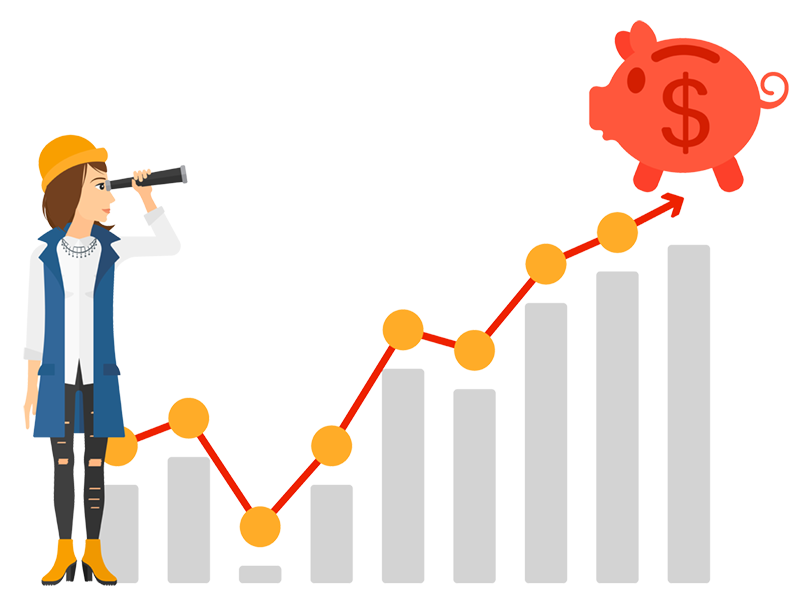TheAnswerIs.ca
Model Portfolio
TheAnswerIs.ca Inc. Model Portfolio Performance Update (Q3 2020)
TheAnswerIs.ca Inc. announces a total return for the Model Portfolio from inception October 26, 2016 to September 30, 2020 of 30.23%. The corresponding total return for the Toronto Stock Exchange (TSX), as represented by the ETF XIC, was 22.17%. The Model Portfolio return is significantly higher than the TSX due to broader economic sector diversification.
The annualized return for the TheAnswerIs.ca model portfolio for the 3.93 years since inception was positive 6.95%.
The trailing 3-month total return for TheAnswerIs.ca model portfolio was 5.33% The trailing 12-month total return for TheAnswerIs.ca model portfolio was 1.89%.
Past returns are not indicative of future returns.


Due to the onset of COVID, between February 20, 2020 and March 23, 2020, the TSX, (and most global stock markets), dropped by about 35%. Yes, a drop of 35% in just over one month. Since then, the TSX has rebounded 44%, but still remains 11% below the Feb 20, 2020 close.
Yes, that is correct. The stock market dropped 35%, has recovered 44%, but is still 11% below its prior peak. The reason is a quirk of math which has an important lesson for investors.
A loss of 35% means an investor must gain 54% to simply break even again.
For example, say you own a single ETF on Feb 20, 2020 that was trading at $100. Then say this ETF dropped by 35% to $65 on Mar 23 2020. How much do you have to gain from $65 to get back to $100? TheAnswerIs 54%. The reason is you have to gain back the $35 you lost from your lower base of $65, ($35 / $65 = 54%). A loss of 35% requires a gain of 54% to breakeven.
I can fully appreciate, from firsthand experience, that reading investment statements during a Bear Market can be difficult. It can actually cause emotional stress and even some nausea, but that discomfort is the ”price” one pays to benefit from the higher long-term returns associated with owning equities, (important - see last page of Future Expected Equity Returns )
The key to investment success is to make sure any money invested in the stock market can be left untouched for a minimum of 10 years, and preferably much longer. Not selling into a stock market downturn will ensure time for a portfolio to recover and provide potentially attractive long-term average equity returns. Five years before one slows down working, and begins to draw money from their portfolio, one should move a significant portion of their portfolio into fixed income.


Annual Rebalancing TheAnswerIs.ca Model Portfolio
TheAnswerIs.ca Model Portfolio comprises six ETFs, (to see the Model Portfolio take the Ready to Invest quiz on the website https://theansweris.ca/profile.php ).
The AnswerIs.ca Model Portfolio is rebalanced once per year in October.
Over the course of the year the Model Portfolio accumulates cash from the ETF dividends / distributions. Further, some ETFs perform better than others.
To invest the dividend income we accumulated throughout the year and to rebalance the Model Portfolio, we need to buy more of the ETFs that have not performed well, and sell some of the ETF’s that have performed comparatively well. It may seem counter intuitive to sell a portion of the “winners”, and buy more of the “losers”, but in effect, this process ensures selling at high ETF prices and buying at low ETF prices.
Overall, TheAnswerIs.ca model portfolio was up 1.89% last year. This small overall return was comprised of three ETFs that were up 7% - 10% each, (i.e. Emerging Markets, US Market and Utilities). However, two ETFs were down 3% - 5%, namely Developed Markets Ex USA and the TSX. Finally, the Real Estate ETF was down significantly.
To rebalance, (Login and go to Add Money / Rebalancing Tab) we simply insert the current portfolio value in the space provided and follow the instructions to rebalance. As a result, we sold small amounts of the 3 ETFs that did comparatively well and purchased the three ETFs that did comparatively poorly over the last year.
That is it until next year!
